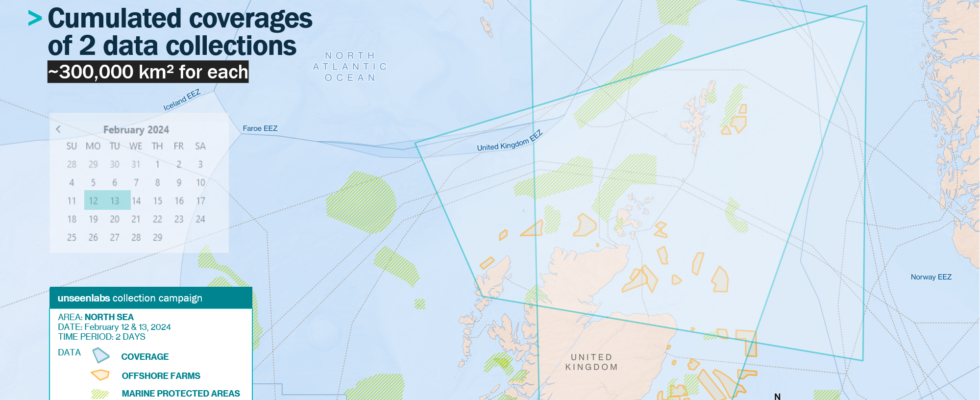Following the sabotage of the Nord Stream gas pipeline in September 2022, NATO became aware of the vulnerability of its vital infrastructure at sea. In early 2024, unexplained movements of several suspicious vessels were spotted in the North Sea. The French SME Unseenlabs, based in Rennes, published the results of a data collection carried out at that time in this strategic region for Europe. Surveys that raise questions, of which RFI had the exclusive.
7 min
Since its creation in 2015, Unseenlabs has made a name for itself in the field of maritime surveillance from space, as the company regularly works for national defense. The company has its own small satellites capable of precisely locating ships using their radio emissions. Between February 12 and 13, 2024, it flew its satellites over the North Sea, detecting and tracking several ” Dark Ships ” This is what these boats are nicknamed. a priori ” elusive ” whose crew turned off the AIS (Automatic Identification System) transponder so as to ” disappear from the radar screens “.
Strategic region
The North Sea is a maritime crossroads of vital importance for Western Europe. It is home to many oil extraction platforms and gas off the coast of Scotland and Norway. But the region is also at the forefront in terms of renewable energy, since it accounts for 40% of Europe’s total wind capacity. The Breton SME specifies: ” The North Sea is full of submarine cables vital cables that form the backbone of global communications. These cables, such as the Atlantic Crossing-1 (AC-1)1 and the Leif Erikson Cable System2facilitate high-speed internet and data transfer between continents, connecting Europe to North America and beyond “.
Suspicious activities
The results recorded by the maritime surveillance company are enlightening in more ways than one. After having covered 600,000 km2 of maritime surface, the satellites sent ” to scan “The area detected 637 boats or others thanks to their radio communications and their ” tags » AIS. But of these vessels, 7%, or 43 to be exact, had their identification systems turned off or out of order. It was only thanks to their frequency (RF) emissions that they could be located. We can therefore conclude that they were trying to evade traditional means of detection.
If you look closely at the map, you will see that a number of them have been spotted near major wind farms, and especially above strategic submarine cables as they sail through British waters. Others are massed around a marine protected area.

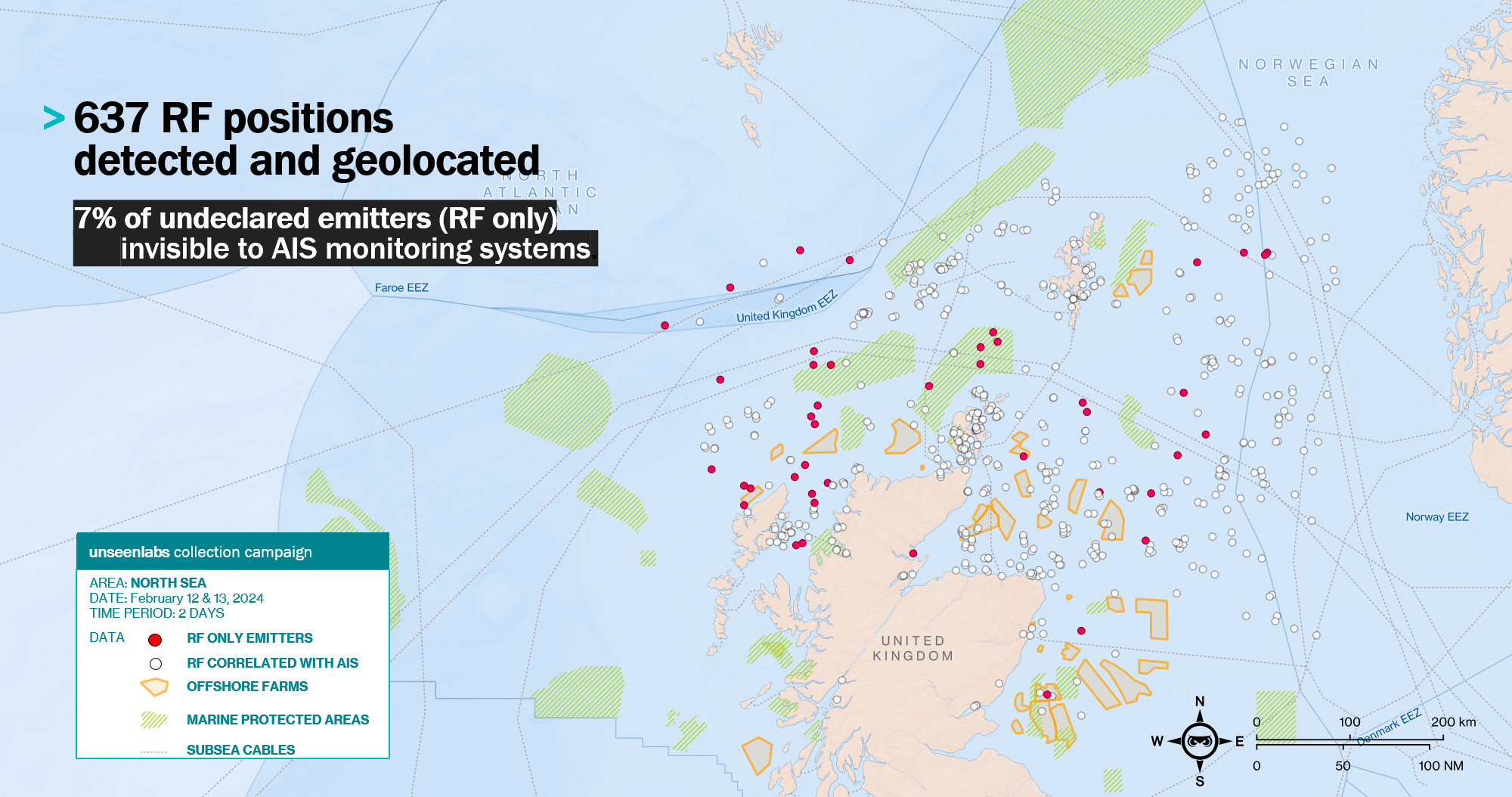
Suspicions of espionage
” As a general rule, the “Dark Ships“cut off their AIS when they enter an exclusive economic zone (EEZ) where they should not be, for example to fish illegally, or to carry out illegal discharges as with certain oil tankers. But in this case, the proximity of these sites suggests that they were rather seeking to engage in espionage activities, or even sabotage, on submarine cables and offshore fields. “, explain maritime surveillance specialists.
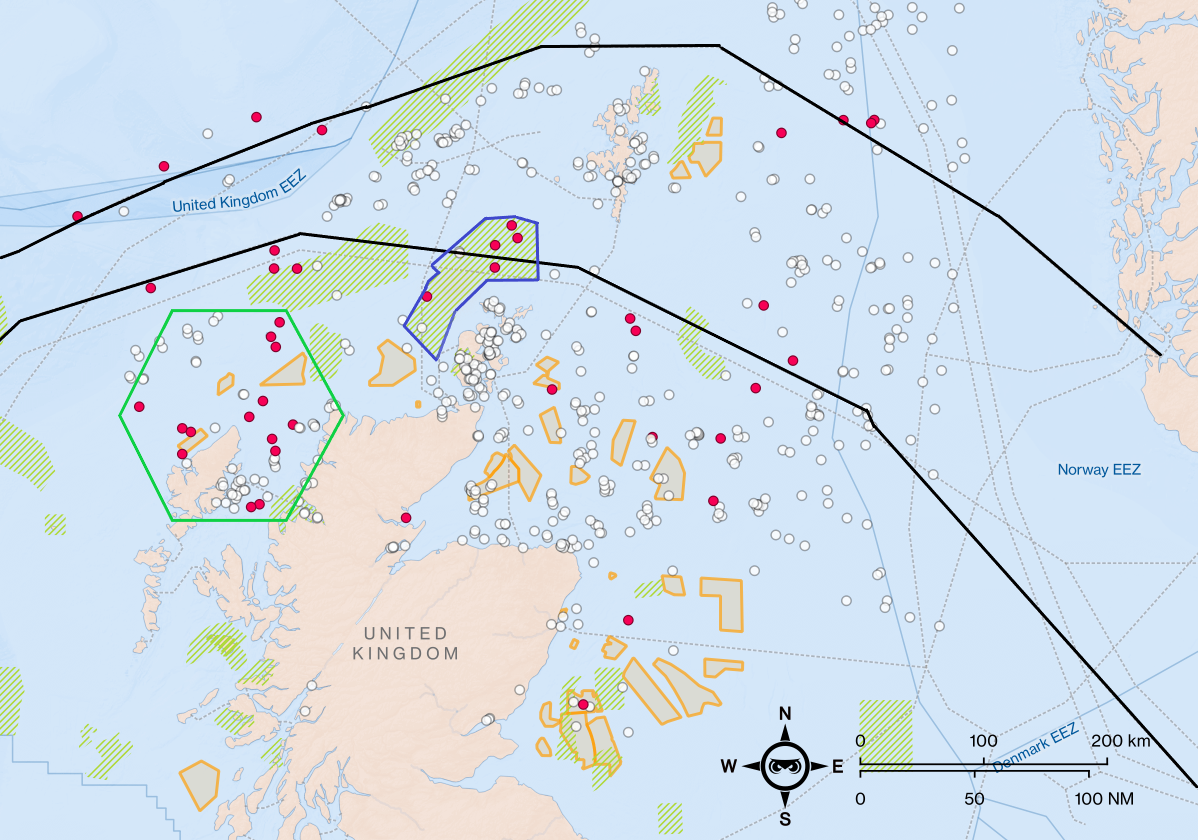
Early 2024, Several well-documented articles have appeared in the Belgian and Dutch press evoking ” the presence of Russian ships trying to gather intelligence on the location of cables and Essential pipelines at the bottom of the North Sea in order to potentially sabotage or disrupt these infrastructures […] To do this, Russia uses fishing boats, cargo ships, oil tankers, research vessels and pleasure yachts. “, assures the Belgian newspaper The day.
Behavior at sea
For reasons of confidentiality with respect to its clients, Unseenlabs has not disclosed the characteristics of the detected ships and has not provided their names or flags. However, it is known that during the Cold War, the USSR employed an entire fleet of ” listening ships ” disguised as Soviet trawlers.
Use of civilian-looking ships for espionage purposes to continue in 2024. Typically, vessels involved in intelligence activities or special missions may indeed turn off their AIS to avoid detection, but this is suspicious behavior. Other vessels therefore prefer to navigate in ” declarative » with AIS enabled, in order to blend in with regular maritime traffic and not attract attention. The choice between these two tactics depends on the specific objectives of the vessel and the risks associated with each method.
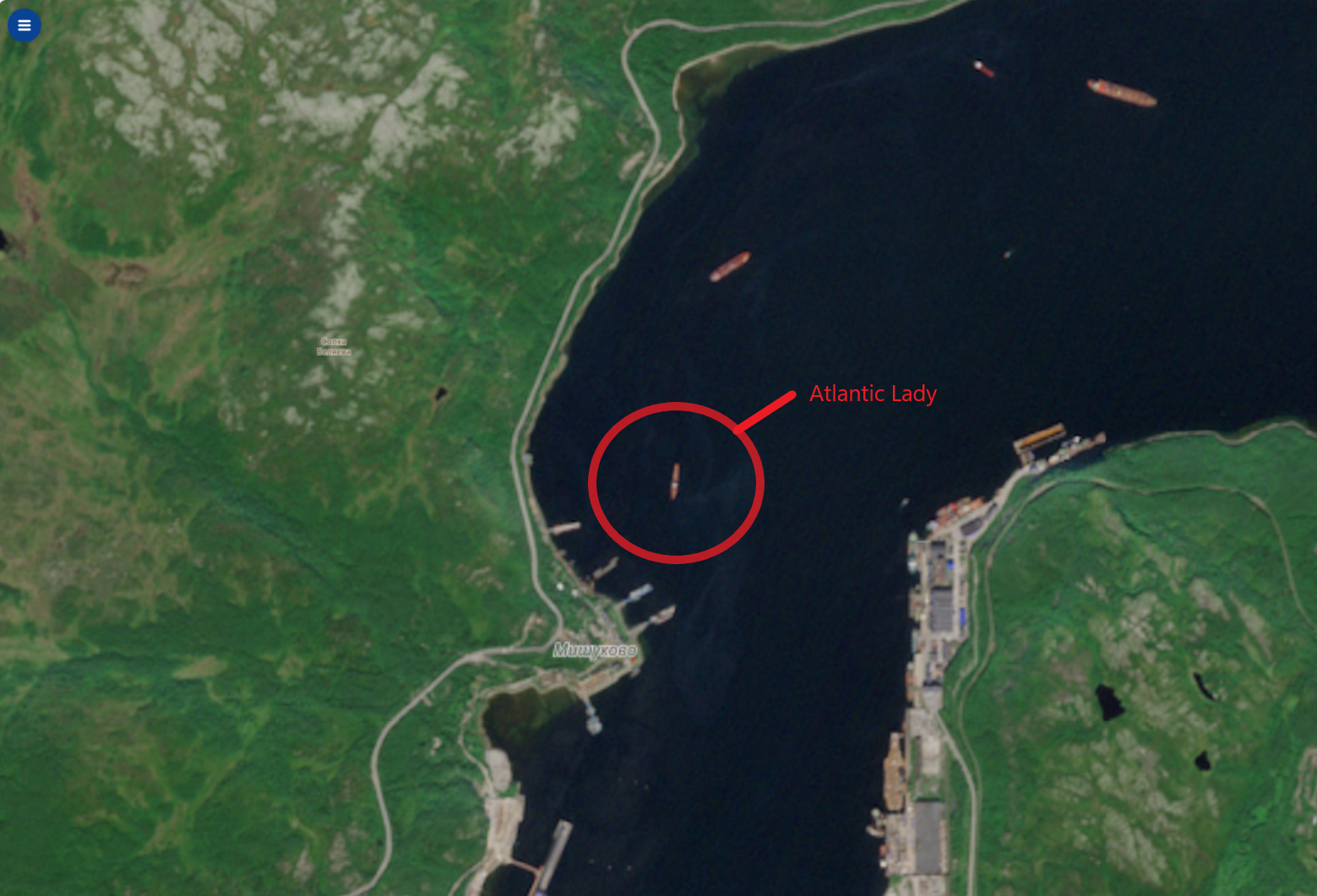
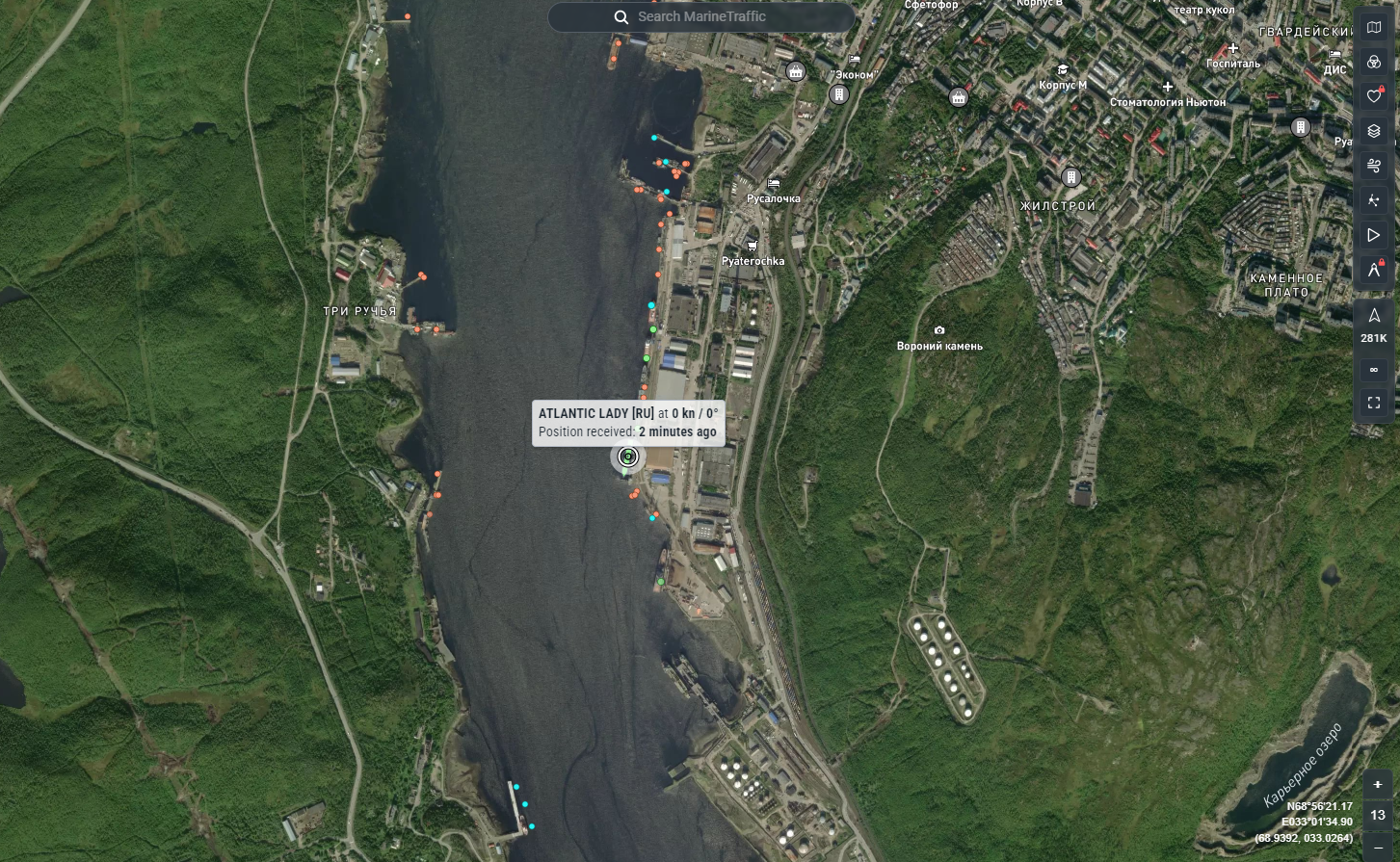
Generally speaking, a spy ship can be unmasked by the attitude of its crew. A commercial ship that zigzags or circles in the water will not have a trajectory at sea compatible with that of a merchant ship, which will follow a straight line. On the other hand, an oceanographic research vessel or a pleasure boat can always pretend to make frequent stops at sea, to carry out scientific surveys. Or say that it has taken shelter in a cove because of bad weather or to explore the seabed.
Russia continues to equip itself with spy ships capable of deploying submarines or robots at very great depths.
The list of Russian ships is growing
Some spy ships regularly pass by off the coast of northern Europe are now well known, like the Yantar which carries submersibles that would be used for underwater repairs, but which are capable of cutting cables several kilometers deep.
As this intelligence expert comments, NATO is studying alternative solutions to strengthen the resilience of its transatlantic communications network.
For its part, the Russian research vessel Admiral Vladimirsky has often been spotted in European ports, its behavior has not failed to attract the attention of Western navies. Just like in 2022, cargo ships Sirius and theAtlantic Ladywhich appeared to be sailing aimlessly along the Dutch coast, but were in fact following the many submarine telecommunications cables in the area.
Since the Cold War, the North Sea has been considered strategic for NATO. The protection of oil platforms has long been an important issue for Great Britain.
With Louis Champier
